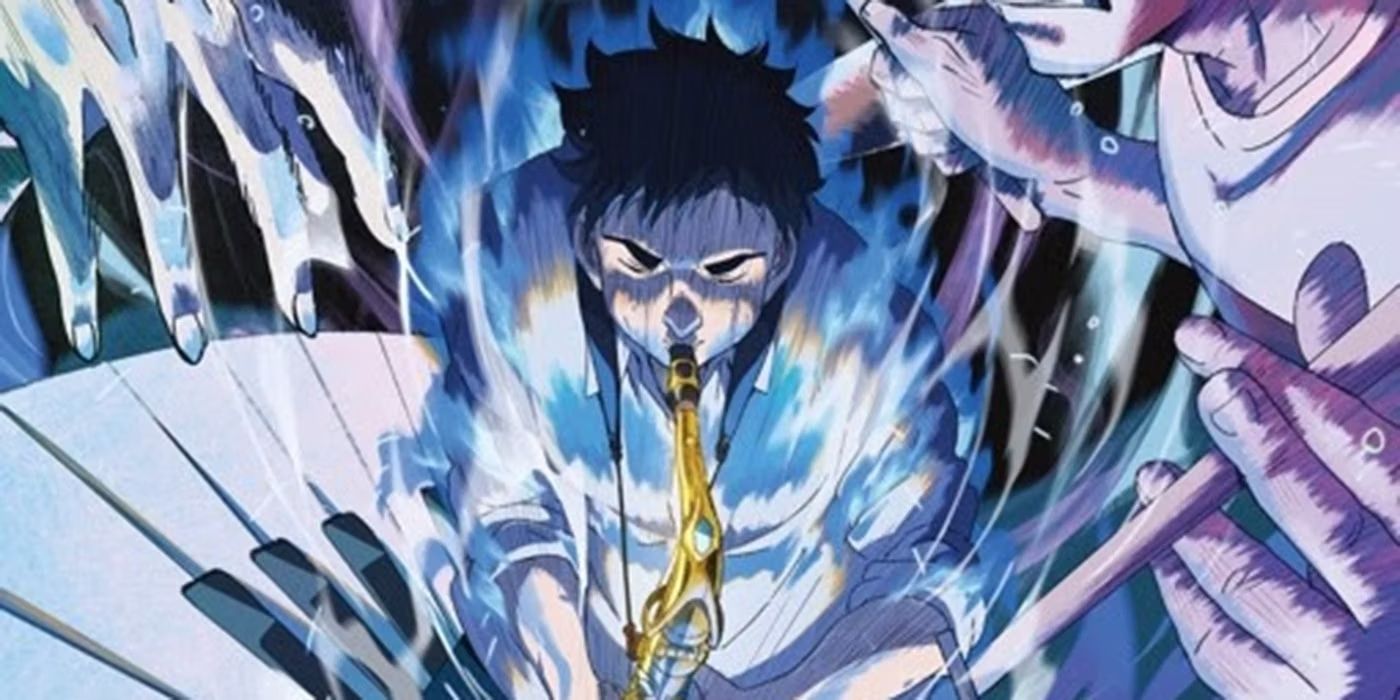The bestselling manga series Blue Giant, created by Shinichi Ishizuka, ran from 2013 to 2016 with a number of sequel manga series, receiving an English-language translation through Seven Seas Entertainment. Telling a group of young men's obsessive quest to achieve jazz music excellence and recognition in Tokyo, the manga has been adapted into a new anime movie of the same name, directed by Yuzuru Tachikawa, who previously helmed the popular anime Mob Psycho 100. Released in North America by GKIDS, the film is a celebration of the awe-inspiring power of music and the friendships forged in the midst of joining forces towards a common cause.
Teenage saxophone prodigy Dai Miyamoto travels to Tokyo after graduating from high school in order to become a serious jazz musician and immediately sets out to form a jazz ensemble. Befriending master pianist Yukinori Sawabe and amateur drummer Shunji Tamada, Dai forms a tight trio that hones their musical chops and begins booking gigs at small clubs and bars around the Japanese capital. As the band grows in popularity, they land increasingly larger and more prominent performances while weathering the unexpected trials and tribulations that come from being in a band.
Running at just under two hours, Blue Giant never feels like it drags despite its relatively simple premise and streamlined opening, with Dai traveling to Tokyo soon after the movie starts. That pace remains for the remainder of the movie, with the movie employing montages to build a sense of progression and knowing when to put in a timely flashback or occasional flash-forward to expand the narrative and hit those key emotional beats. Blue Giant is definitely an emotional movie, with a rollercoaster of twists and turns that bring triumph and tragedy to Dai's band as they rise into the spotlight and grow tighter as a jazz ensemble.
The jazz set pieces improve and grow more ambitious as the characters' musical talent becomes more refined. The earlier gigs and when Dai plays saxophone alone aren't as rousing to audience members who may not be particularly appreciative of the jazz genre. However, the climactic set piece is a true masterclass in constructing a tight musical sequence that delivers a stirring blend of emotions, both victorious and melancholy, just like jazz.
The animation style matches the art style employed by Ishizuka, especially with the character designs for the movie, crafted by Yūichi Takahashi. The only time the animation hiccups is in occasional musical sequences when the band takes on a CG animation rather than a more traditional style, presumably to make their movements appear more fluid. There are moments when the animation becomes much more abstract as the band becomes consumed by the music, with these deviations in the animation style proving much more effective than the CG shifts.
Weaving a beautiful tale of friendship powered propulsively by jazz music, Blue Giant does Ishizuka's fan-favorite manga series proud. One doesn't need to be familiar with the manga to enjoy and appreciate Blue Giant. It provides enough of an access point to the audience, deftly piecing together its backstory as it builds to a crescendo. Gorgeously brought to life in a concise tale that's at separate turns heart-warming and heartbreaking, Blue Giant is a fantastic adaptation and solid anime film.
Directed by Yuzuru Tachikawa, Blue Giant is distributed by GKIDS.


